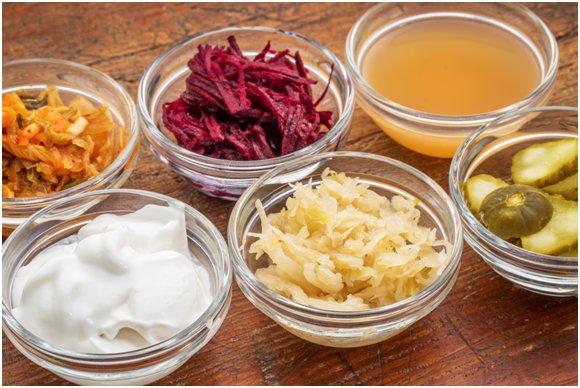Last month, John was diagnosed with a stubborn skin infection and his infectious disease specialist prescribed the antibiotic clindamycin daily for 3 weeks. Having suffered from constipation off and on for most of his life, by the end of the first week on the antibiotic his chronic constipation went away, but by the second week it had turned into diarrhea. He came to me for help. “I can’t walk past my bathroom without having to go.”
I suggested he start taking a probiotic, and he called back 3 days later to report that his bowels were back to normal.
Probiotics are friendly bacteria, yeast, and parasites that live in our intestines and vagina. There are more than 400 separate strains of these organisms, which are vitally important in helping us absorb nutrients and metabolize our food.
Probiotics have another important job: they discourage the growth of “bad” bacteria and other organisms that can make us sick by competing with them for space and nutrients. Some probiotics produce lactic acid along with other compounds that work to discourage the growth of other organisms and keep your intestines in balance.
John’s clindamycin antibiotic killed off the bacteria responsible for his infection, but along the way it also killed off his “good” intestinal bacteria, leaving room for the “bad” bacteria to take over. This caused him to have diarrhea, called antibiotic-associated diarrhea. Luckily, taking probiotics can decrease the risk of antibiotic-associated diarrhea by up to 70%.
The 3 most common probiotics shown to be helpful in keeping our intestines in balance are Lactobacillus, Bifidobacteria, and a fungus called Saccharomyces. Some probiotics work by secreting compounds that are antibacterial: hydrogen peroxide, lactic acid or acetic acid.
Lactobacillus makes lactic acid, which increases the acidity of vaginal tissue. This helps protect you from both bacterial and yeast vaginal infections. The bacteria Gardnerella is an organism that normally live in your vagina. An antibiotic can disrupt that balance and allow overgrowth of certain bacteria, causing inflammation and an infection called bacterial vaginosis. Lactobacillus also secretes hydrogen peroxide in the vagina, which is deadly to Gardnerella and helps keep it under control.
The helpful fungus Saccharomyces, available as Florastor® has been shown to help prevent antibiotic-associated diarrhea. There is also evidence that taking a combination of Lactobacillus and Bifidobacteria bacteria to treat antibiotic-associated diarrhea is more effective than either organism by itself.
Some strains of lactobacillus are better at sticking to the lining of your intestine than others, with other strains being better at re-establishing themselves when the “bad guys” are already in place. One of the best ones for adhering to your gut lining is Lactobacillus GG, available as the product Culturelle®.
There is a now a lot of interest in the use of prebiotics instead of probiotics to help your intestines and vaginal tissue stay healthy. Prebiotics are different than probiotics because probiotics are actually living organisms while prebiotics are carbohydrates. Prebiotics work as support staff to your probiotics, feeding them and encouraging their growth by the way they change your intestinal environment.
Prebiotics work like “Miracle Grow®” to help certain bacteria and fungus grow and multiply, and are less expensive than probiotics because they don’t have to be protected from excess heat and preservatives.
Here Are 5 Tips on Maintaining a Healthy Intestinal Environment:
- Eat yogurt containing live, active cultures.
Eating yogurt can be an excellent way to get Lactobacillus into your intestine, but most commercial yogurt brands are processed and do NOT contain live bacteria. Check the label before you buy.
- Avoid taking acid-blocking medicines like omeprazole (Prilosec®).
Stomach acid is a very important defense against the overgrowth of unfriendly bacteria in your intestine. Powerful acid blocking medicines like omeprazole (Prilosec®), lansoprazole (Prevacid®) and pantoprazole (Protonix®) tame heartburn by decreasing the amount of acid pumped into your stomach, but put you at increased risk of getting pneumonia or antibiotic-associated diarrhea.
- Choose probiotics containing more than one organism.
There is good evidence that the taking both Lactobacillus and Bifidobacteria bacteria to treat antibiotic-associated diarrhea works better than either organism by itself.
- Store your probiotics properly.
Probiotics are living organisms, and need controlled conditions to stay viable. Whether at room temperature or in the refrigerator, be sure to observe any storage recommendations and avoid extreme heat like in a parked car in the summer on the way home from the store.
- Fermented foods are some of the best and least expensive prebiotics.
If you like sauerkraut or kimchee, eating it regularly can help support a healthy balance of intestinal bacteria.


